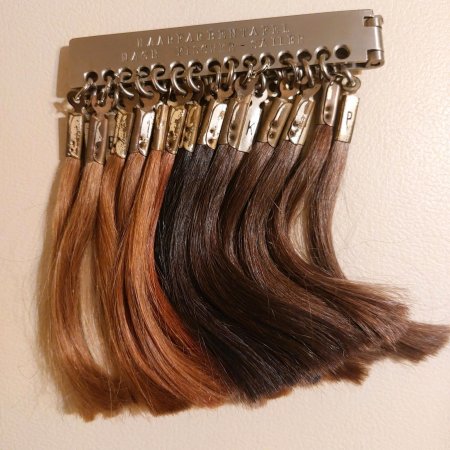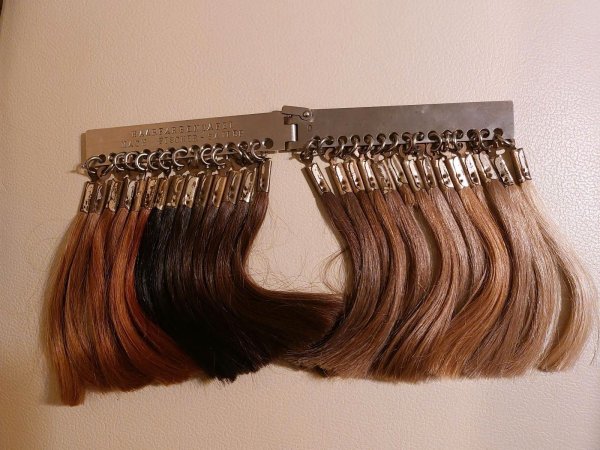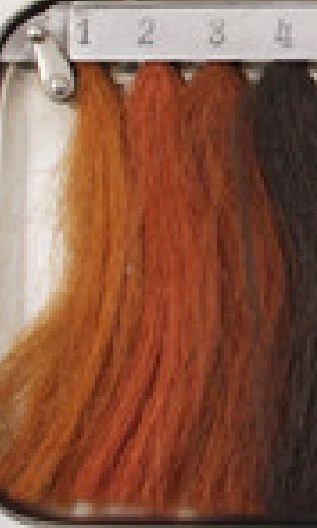@Melkiirs
- I ‘ll try to answer you.
- I am an
amateur, and I observed on life (common people) and on pictures (sportmen, for the most, more than a picture for a person, preferably on collective pics) -
- my ‘scale’ is y my eye, I regreat I never had the Fisher’s and others scales to compare -
- in my partly mistaken conception, I separated completly the light vs dark categorisation from the redness one. So « reds » did not appear in my dark/light %’s where I found always 100 % without speaking of reds, and the reds %’s concept was apart for me -
- it’s not a genomic exercice but a visual observation one in my personal way of discrimination, I try (my eyes) to divide the reddish input into 8 parts :
arbitrary, as well as the scientists scales (I take for proof Fisher produce more than one) – my 1/8 category is very subject to caution, even more when you observe pics which may habe been badly printed (red color forced or limited) : even more reddish I saw people who were reddish on a pic and apparently non reddish on another pic! So, tou need more than a pic to make your opinion.
- concerning Piquet and the Corsicans, 477 men isn’t a big sample, and it had more impact on rare hues as reds than on the allover pop (that said I have even less in some cases) – other works in France found 0,8 % for them, what seems to me closer to reality (but I’ve not enough Corsicans at hand to judge it) -
- I take for ‘red or reddish’ (strongly reddish blonds amids) the people I consided as at least with 3/8 redness/rufosity - it’s very possible, maybe sure, I missed very dark 3/8, even 4/8 or more, on pics, alas !!! - as a whole, the extremely light or dark are more mistaking concerning their redness.
- as you and others say, the rufosity can diminish with age. It can even fade out – in Brittany I know two man who were red haired until their 20’s and turned brown haired, almost without visible reddish hue ; one of them had a brother, red haired too, who kept red haired (I didn’t saw him after his 50’s) – but both reds turned into brown haired has kept their red hair
on their body… -
- other observation : as a whole it seems to me red haired people turn grey and then white sooner than the mean population – it affects the isolated red hairs (beard) too, the first ones to whiten in beard -
- as a whole, spite based on relatively small pop’s and the arbitrary definitions, my pigmentation predictions on life and pictures give close results for the same pop – what accounted for me was having a constant criteria if possible -
- I agree the first Fischer ‘s scale was too restrictive and I prefer the Fischer-Saller based on what I kno of Boris Becker who is a true « red » (7/8- 8/8 for me spite he is fair haired otherwise?) - in my old visual conception, Boris Becker is classified among the light haired people in one state, and true red haired in the specific state -
- the states of Virchow I read are without use to my conception – and as you I doubt is Coburg-Saxe-Gotha state would be correct, compared to other regions of Germany - that said in a close enough region (Voralberg, CNE Hessen) Coon found or reported around 4 % of red/reddish hairs if I don’t mistake -
- I think the respective distributions of dark reds, middle reds and light reds is strongly correlated to the distribution of corresponding non red – at the opposite, I see no correlation between these categories (dark to light) and the density of rufosity, unless we take in account the greater difficulty to measure the slight redness among dark hues -
- so my states take in account a relatively large span of rufosity density -
- to make a general sketch I think the most red haired pop’s are in Ireland, Scotland, Mordvins left aside - Askhenazes are also often red haired, maybe a bit more than the most of Germanic countries, some of their regions left aside – My vision of Weslh people is the same as the Beddoe ‘s one : national mean, influenced by the region with high demic density (more : towns with English migrants) are the less « red », the less peopled ones are highly « red », almost as red as the redder ones in Ireland and Scotland – Slavic countries less red – Baltic and southern countries even less red – schematic but globally correct ! -
my little states confirm some studies : at national level, Norway is less red than the other Germanic countries – Flemings are less red than Netherlanders AND than Walloons -
ATW the visual studies od rufosity on hair are a little bit blurred – but the global impression is sensible -



